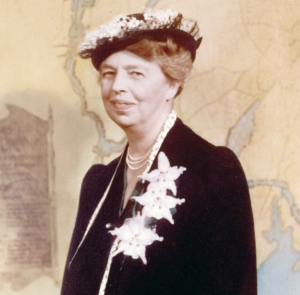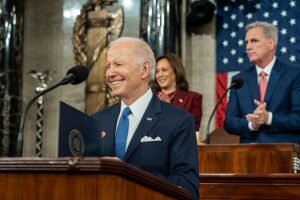2022: The Year Europe Made Its Energy Shift
The European Union (EU) will now look back at 2022 and see it as the inflection point in its energy security. This should have been done seven years ago during the illegal Crimea annexation, but the progress made thus far is promising and will be consequential for the future of Europe’s energy landscape.

Image Credit: Reuters / Dado Ruvic
We passed the first anniversary of the Russia-Ukraine War this February. This war has revealed Europe’s energy security weaknesses as well as how important gas as a commodity still is despite renewable energy aspirations. The European Union (EU) will now look back at 2022 and see it as the inflection point in its energy security. This should have been done seven years ago during the illegal Crimea annexation, but the progress made thus far is promising and will be consequential for the future of Europe’s energy landscape.
To understand the current landscape, we can look back to two major developments over the past ten years: Russia’s illegal annexation of Crimea in 2014 and the signing of the Nord Stream 2 pipeline agreement between Russian gas company Gazprom and two German companies. Russia’s incursions into Ukraine should have rung alarm bells as to Russia’s intentions and threat to Europe’s reliance on Russian gas. There should have been a firmer response to Russia’s annexation of Crimea, and the EU should have more robustly explored energy alternatives to cheap Russian gas and oil. Instead, the EU’s failure to heed this warning contributed to the situation we face today with the war in Ukraine.
In recent years, Russia has had a firm grip on Europe’s energy supply. In 2020 alone, 41.1% of EU imports were solely Russian natural gas and 25.7% Russian crude oil. This import load on both oil and gas should have pushed the EU to become more energy independent considering continual warnings from the USA such as one such instance from then Vice President Biden in 2016 regarding the construction of the Nord Stream 2 pipeline. For if Russia decided to stop the import loads of both oil and gas, there would be severe consequences for the EU. The Russia-Ukraine War finally made the EU reconsider.
There was certainly much doomsaying as the winter of 2022 approached, with fears that Europe would freeze if Putin shut down access to Russian gas. In response to this concern, the EU enacted initiatives and policies designed to strengthen its energy independence. For one, Europe sought other sources of Liquefied Natural Gas (LNG) from deals with Qatar and the United States. The EU also invested in domestic production of LNG, with 15 projects expected to raise regasification capacities to be completed by 2024. These investments speak to the development of alternative LNG avenues, as well as building up regional LNG infrastructure to make Europe interdependent rather than dependent on one LNG source.
The EU also sought to conserve energy throughout the summer of 2022. We can take a look at the case of Spain, which prohibited air conditioning to be lowered below 27 degrees Celsius (80.6 Fahrenheit) during the summer, and heating to exceed 19 degrees Celsius (66.2 Fahrenheit) during the winter. Meanwhile, shop fronts were ordered to go dark by 10:00 at night. That same summer, Spain’s companies sought to cut down LNG imports from Russia. As Russian LNG makes up only 11.9% of Spanish gas imports, Spain enacted plans to help their more-threatened EU counterparts. Indeed, Spain reactivated its largest LNG plant terminal in Barcelona and partnered with Portugal, which reactivated its major LNG plant to serve as a strategic energy center for Europe.
Likewise, the EU passed a new market correction mechanism last December to protect its economy and citizens from higher gas prices. While all the aforementioned initiatives were admirable, the unusually warm winter helped greatly as it meant lower demand for LNG.
Europe dodged a bullet during the winter, but it does not mean they should stop capitalizing on their energy interdependence initiatives. To the nations who have inactive nuclear reactors, restarting them would be a good first step; Germany announced in February that their last three nuclear centers continue running until this past April and though they shut them down then, it shows that nuclear power is still important. Second, diversifying LNG sources and considering expanding imports from Australia and Malaysia could vary the imported load. Perhaps another move could include developing LNG stocks if enough Research and Development (R&D) is financed significantly by governments, such as Spain has. Finally, the alternatives to gas and oil, such as hydraulic power and other renewable energy technologies, should be further explored. Indeed, green hydrogen is in the ongoing talks between the government of Madrid and Brussels concerning a new gas pipeline that would cross the Spanish Pyrenees and connect to the rest of Europe to deliver LNG to needier European nations.
The EU’s about-face energy shift will likely stick because the EU has woken up to its vulnerability, and now must fortify itself to prevent Russia from jeopardizing its oil and gas supply. As evidenced by the aforementioned initiatives, the EU is moving towards a new status quo: not putting all of its energy-related eggs in one basket. Indeed, EU President Von Der Leyen has stated that gas interconnectivity is now an EU top priority. Some scholars have also stated that Germany faces most energy security risks and could benefit from more gas terminals.
The EU has had quite the shift in 2022, and for the better. If it keeps up with energy interdependence for the rest of Europe as well as continued support for Ukraine, it will shield itself from future Russian weaponization of energy. Europe is proving it can fend for itself and look away from Russia for its crucial energy supply.

Jorge Legarda Zagora is a second-year MA student pursuing a global affairs degree at NYU’s Center for Global Affairs department with a focus on Energy and Environmental Policy, currently in his final semester of the program. He graduated with a bachelor’s degree in international studies from American University in Washington, D.C., in 2020. Jorge is fascinated by the ever-changing geopolitical landscape of the world and the booming energy sector that accompanies it within the context of global affairs. He is currently wrapping up a thesis that examines the policy outlook of some energy startups in Europe, as innovative startups fascinate him. When not working, he enjoys reading fictional books, watching movies and TV shows, and taking walks around the city.






